Granada city guide: Best things to do and where to stay in Spain’s magical Moorish centre
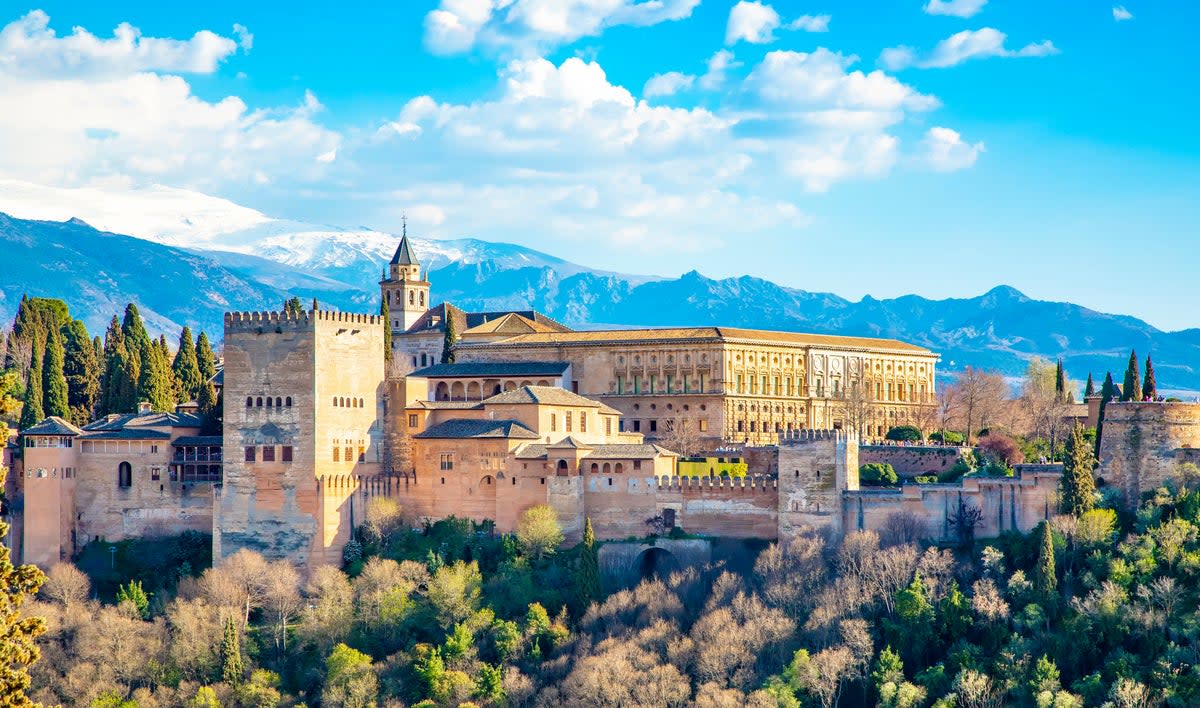
Many aspects of Granada come in threes. The city is set over three main hills: the Albaicín, Sabika and Sacromonte. These hills are wedged between two additional topographies: the snow-capped Sierra Nevada mountains, which loom above the city, and the fertile vega plains below, which sustained the Moors for centuries.
The majestic Alhambra, crowning Sabika hill, is also split into three sections: the Alcazaba (fortress), the Palacios Nazaríes (Nasrid Palaces), and the Generalife (palace gardens). They form one of Europe’s great tourism glories.
The old Arabic quarter, Albaicín, peers out towards the Alhambra, while the Sacromonte is a stronghold for the gitano culture so beloved by, and influential to, local son, poet Federico García Lorca. This culture is epitomised by the clack of the castanet and the soulful strum of flamenco guitars.
When you’re not exploring these locations, you’ll likely be sampling the local cuisine. Thankfully, Granada is one of the last strongholds of the generous (and fading) “free tapa with a drink” deal.
Here’s how to make the most of a trip to this underrated Spanish city.
What to do
Seek perfection at the Alhambra
Although the Spanish recaptured most of the Iberian peninsula by the 13th century, the Moors clung to Granada largely without conflict until 1492. It’s as though that uneasy peace for two centuries was more palatable to the Christian monarchs than the prospect of damaging the now Unesco-listed Alhambra in battle.
Read more on Spain travel:
This wistfully romantic complex is the pinnacle of the Moors’ mastery of geometry and design. Some of Spain’s finest artisans came from Granada during this time and their best work was undoubtedly saved for this stunning relic.
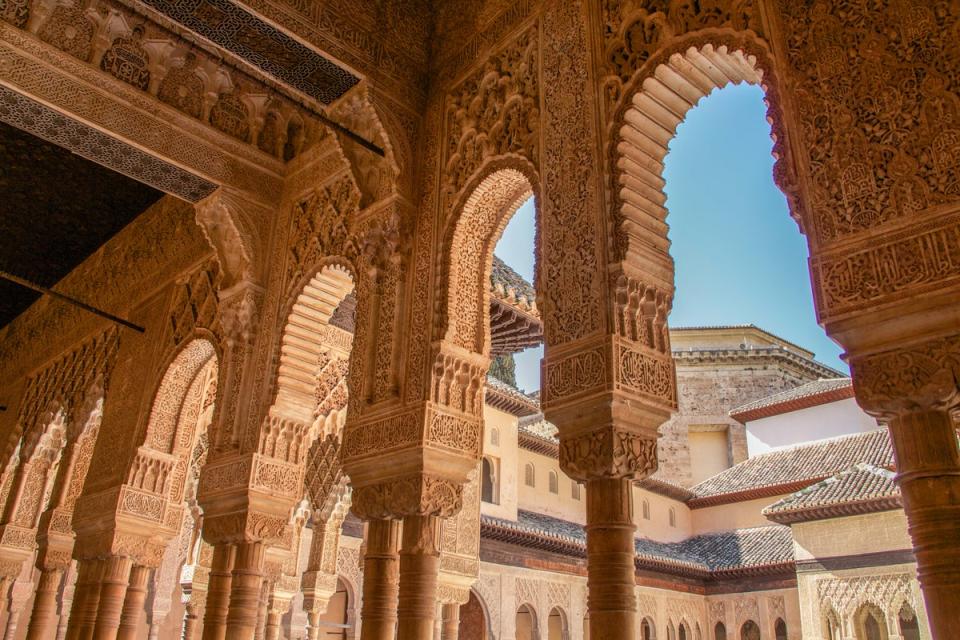
Dedicate the better part of a day to visiting. Entry to the Palacios Nazaríes (Nasrid Palaces), where the emirs lived, is by timed ticket to prevent overcrowding. The Alcazaba fortress is the oldest part of the site and holds the higher ground, while the Generalife gardens reveal the penchant in this oasis of arid Andalucía for fountains; at certain parts of the day, water runs down the streets from the Alhambra in tiny channels, an extravagance designed to emphasise the Moors’ wealth.
Get to grips with Granada
Granada’s historic core and old neighbourhoods display Spain’s tightest blend of Moorish Islamic and Spanish Christian sensibilities (aka Mudéjar architecture). A good place to start is Plaza Isabel La Católica. Walk a few blocks west and you’ll pass Moorish palaces and busy shopping streets, before the bulk of Catedral de Granada materialises.
For those familiar enough with Spanish religious buildings to make comparisons, the interior is a little underwhelming, although it is among the larger cathedrals in Spain. The façade of the cathedral is Baroque, while the adjoining Capilla Real (Royal Chapel) is late-Gothic and contains the tombs of the Catholic monarchs. The most notable tombs are those of Ferdinand and Isabella, who reclaimed Granada for Spain in 1492, while ushering in a deadly brand of religious fervour that later gave rise to the Inquisition.
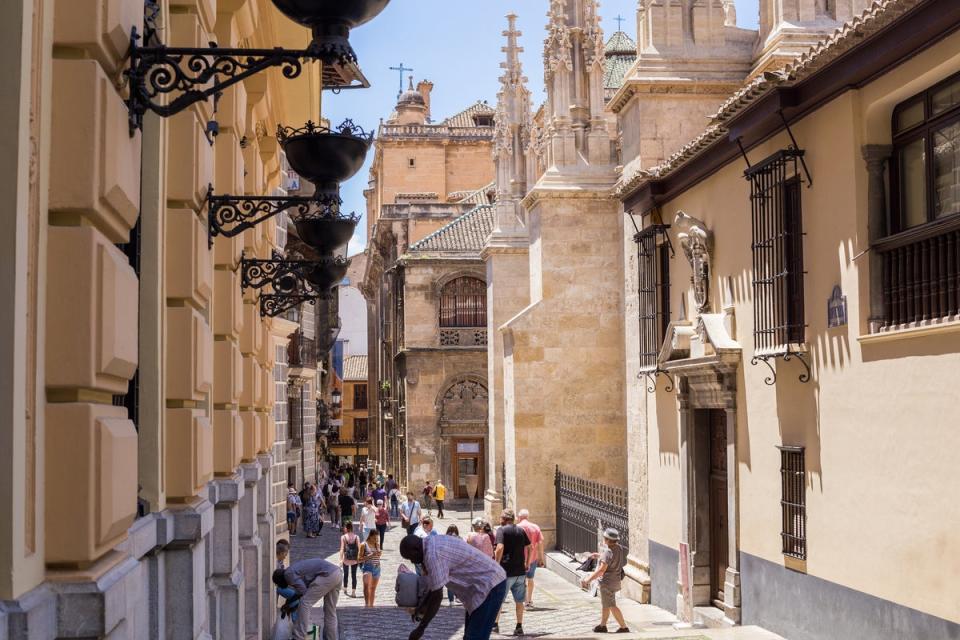
Wander northeast through Plaza Nueva towards the Church of San Gil y Santa Ana. The Mudéjar ceiling within is a splendid example of Moorish design in a Christian setting. That’s because, like many religious buildings in Granada, this one replaced an earlier mosque.
From here, the road diverges to follow the Darro River, where a cluster of excellent museums includes the 11th-century El Bañuelo – an Arabic bathhouse – and the Palacio de los Olvidados (Palace of the Forgotten), which is dedicated to exploring Jewish, Roma and Inquisition history in the city.
North of here, uphill, the Albaicín district unfolds in a warren of narrow alleys and staircases, atop which are views of the Alhambra that are pinch-yourself picturesque at sunset. This area, which shares Unesco status with the Alhambra, was the old Arabic quarter of the city.
Flamenco in a Sacromonte cave
The Sacromonte pulses with cultural ambition. Once it was a neighbourhood of deprivation, where the Roma people were marginalised. Many lived in cave homes, dug into the porous hillside rock. Museo Cuevas del Sacromonte is an ethnographic museum showcasing domestic life as it was once lived here.
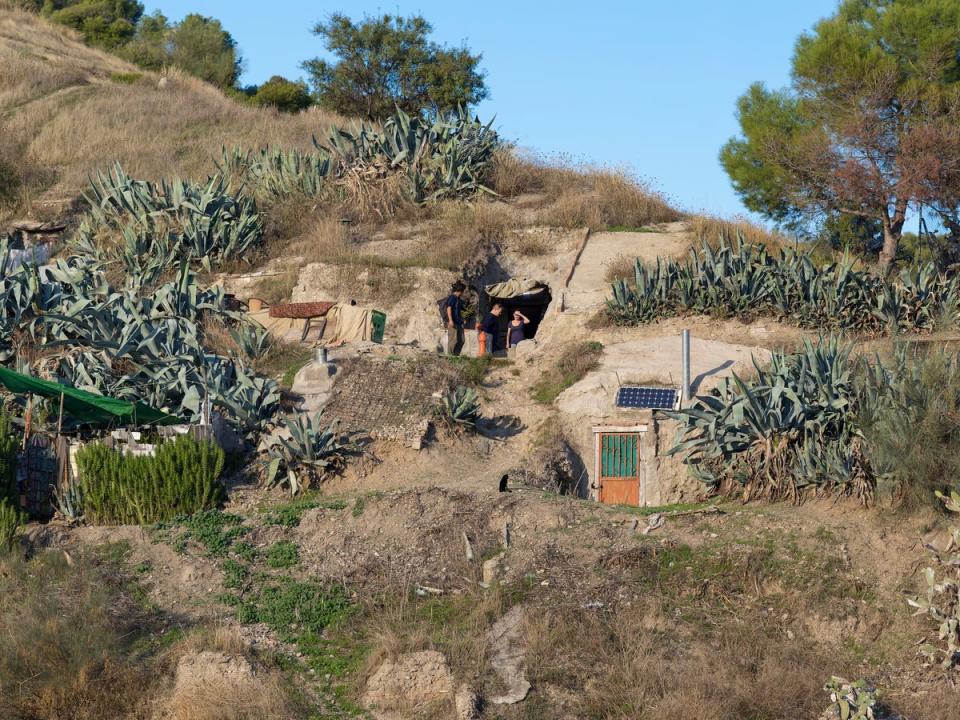
It was here that flamenco took strongest root in Granada; the artform’s dolorous serenades were lent an authenticity by the hardship. You can still catch performances in some of these caves; both Cueva La Rocio and Venta el Gallo host nightly shows.
Lorca’s Granada
Federico García Lorca is widely considered to be Spain’s greatest poet and playwright. The Huerta de San Vicente, located in the park named after the poet on the west side of Granada, was where he wrote many of his best poems in the last decade of his life. Visits are by 30-minute guided tour only.
Lorca was born into a wealthy landowning family in Fuente Vaqueros, roughly 17km (13 miles) from Granada. His birthplace is preserved as the Museo Casa Natal Federico García Lorca, with guided tour visits in Spanish only.
Where to stay
Parador de Granada
Spain’s paradores are a collection of state-run hotels, often occupying some of Spain’s finest heritage buildings. The Parador de Granada is within the former Convent of San Francisco, which lies inside the walls of the Alhambra and was one of the earlier structures to be built, atop a former Nasrid Palace, after the Catholic monarchs retook the city.
Hotel Palacio de Santa Ines
Located within a 16th-century building at the foot of the Albaicín district, Hotel Palacio de Santa Ines is one of many hotels looking out towards the Alhambra. Original features have been preserved, including a central courtyard with faded frescoes, and the wooden ceiling beams in many of the rooms.
Casa Bombo
To those willing to trek further up the Albaicín hill go the spoils of Spain’s finest views. A variety of neat rooms is available at Casa Bombo, but those with access to the terrace and pool are among the best situated in the city. A generous continental breakfast is also included.
Where to eat
Café 4 Gatos is a cute little spot with tables lining the cobbled Albaicín steps. Open daily, they serve a range of options, from simple classics such as pan con tomate with good coffee, to their breakfast specials, such as smoked salmon and cream cheese tostadas.
Great tapas bars are dotted throughout Granada, although in certain areas they cluster together. For visitors sticking to the central neighbourhoods of the city, aim for around Calle Elvira, two blocks from both the cathedral and Plaza Nueva. Both La Buena Vida and Bar La Riviera have been around for many years and offer a good selection of classic tapas, including vegetarian options.
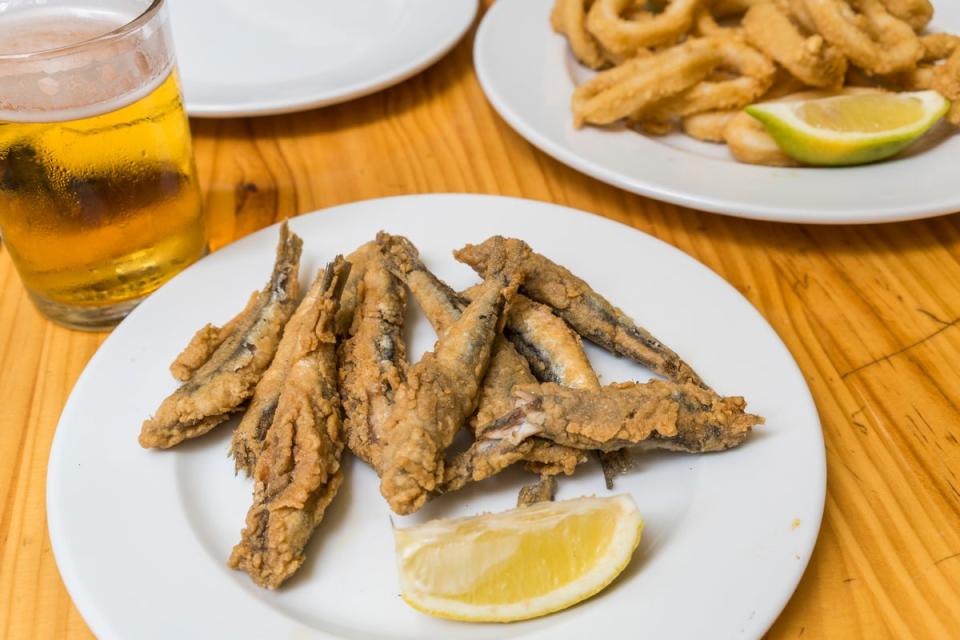
Granada’s restaurants often have showstopping vistas. It’s really a wonder the waiters get any work done at Carmen de San Miguel. Serving Andalusian cuisine, there’s a four-course tasting menu priced at €75 (£65), including five wines, or dine a la carte. From the latter, the cochinillo confitado a la vainilla (vanilla-glazed suckling pig) is a highlight. This is one to book in advance; be sure to request a table on the balcony edge of the terrace.
The city is also one of Andalucía’s better places for vegetarian and vegan dining. At Hicuri, the walls are covered in murals, the prices are among the lowest in the city, and everything on the menu is plant-based. Highlights include the croquettes and, particularly in summer, the salmorejo (a cold soup of tomato, olive oil and garlic) is a must-try.
Where to drink
Granada is one of the rare Spanish cities still to offer a free tapa with every drink. It’s therefore common for people to enjoy a tapeo, or tapas bar-crawl, enjoying a bite with every round. Try El Bar de Fede (named after the affectionate local term used for Lorca), or Bar Poë, which is much loved for its international fusion cuisine tapas.
Taberna La Tana is a top choice for sampling Spanish wines, with hundreds of bottles on offer. Where the walls are not dominated by stacks of bottles, they are covered in traditional farming equipment. The free tapas with your drinks here are of excellent quality and are paired with your wine.
Granada is well known for its teahouses, known as teterías, which are another example of Arabic culture’s endurance in the city. Abaco Té is a great place to stop midway through an exploration of the Albaicín, serving dozens of teas and natural juices. For that extra dose of arabesque design, Tetería El Bañuelo serves tea in steel pots along with Arabic sweets, such as sticky baklava.
Where to shop
Silks and spices
A remnant of the old silk bazaar from the days of Moorish Granada, the Alcaicería remains a place to find souvenirs, such as Arabic-style handicrafts, silks and clothing. The narrow, almost claustrophobic streets could easily be plucked straight out of a Marrakech souk. You’ll also find typical tourism curios sold here.
Taracea
Quite unique to Granada, taracea is a decoration technique perfected for the emirs of the Alhambra. The technique uses shells and mother of pearl inlay to encrust and embellish furniture items with creative patterns. You’ll find plenty of cheap imitations, but only a handful or artisans remain to create the legit stuff. Decent pieces can still be found at Artesanía González.
Couture
If you’ve recently caught a flamenco performance and thought the attire of the dancers is something you’d like to acquire, then Moda Flamenca Azabache specialises in flamenco dresses and shoes.
Architectural highlight
Palacio de la Madraza, a cultural centre located next to the cathedral, is a fine example of Spain’s architectural evolution during the medieval era. It combines the original Moorish madrasa (religious school), Mudéjar-style additions, and a Baroque exterior. The building is now part of the University of Granada, although visitors are usually allowed to have a look around.
FAQs
What currency do I need?
Euros.
What language do they speak?
Spanish.
Should I tip?
Although tipping isn’t expected, adding 5–10 per cent to your bill is always appreciated, particularly in places where you receive free tapas with your drinks.
What’s the time difference?
GMT+2.
How should I get around?
Public transport is not too well provisioned in Granada due to its hilly disposition. All the major sights are accessible on foot (with a little light sweating). Sensible footwear is advised.
What’s the best view?
The Albaicín holds Granada’s most enviable viewpoints, the finest of which is the Mirador de San Nicolás.
Insider tip?
Granada has a vibrant live music scene, particularly rock, with bands such as Los Planetas and Niños Mutantes gaining success throughout Spain and beyond. Among the city’s many great venues to catch a show is El Bar de Eric.
Read more on the best Spain hotels

 Yahoo News
Yahoo News 
